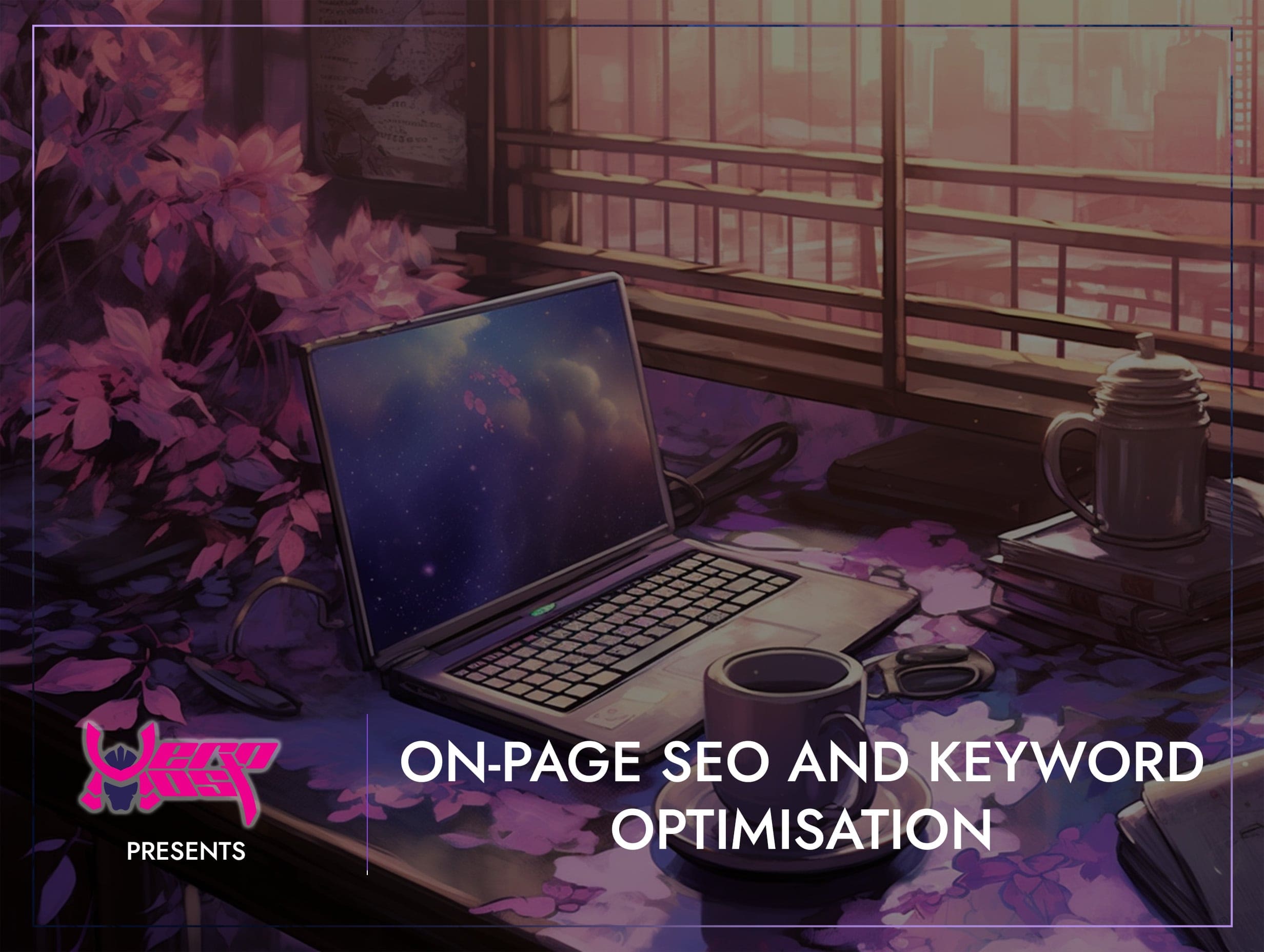On-Page SEO and Keyword Optimisation
- Home
- Search Engine Optimisation (SEO)
- On-Page SEO and Keyword Optimisation

- Mikey Ryu
- June 20, 2024
- 0
On-Page SEO and Keyword Optimisation
On-page SEO and keyword optimisation are essential for improving your website’s search engine rankings and driving organic traffic. By effectively integrating keywords into your content, optimising titles, headings, and meta descriptions, and leveraging Latent Semantic Indexing (LSI) keywords, you can enhance your site’s visibility and relevance. This blog will delve into these key aspects to help you master on-page SEO and keyword optimisation.
Best Practices for Using Keywords in Content
Keywords are the foundation of your content’s SEO. Here are some best practices for using keywords effectively:
Natural Integration
Integrate keywords naturally within your content. Avoid keyword stuffing, which can make your content sound unnatural and harm your rankings. Instead, focus on using keywords where they fit organically.
Keyword Placement
Strategically place your primary keywords in critical areas of your content, including:
- Introduction and Conclusion: Mention your primary keyword early in the introduction and in the conclusion to reinforce relevance.
- First 100 Words: Include your primary keyword within the first 100 words of your content.
- Body Content: Distribute keywords evenly throughout your content. Aim for a balance that ensures readability and SEO effectiveness.
Use Synonyms and Variations
Utilise synonyms and variations of your primary keywords to enhance the content’s relevance and avoid repetitive language. This approach helps in reaching a broader audience and covering different search queries.
Optimise Images and Alt Text
Include keywords in image file names and alt text. This practice not only improves your SEO but also enhances the accessibility of your content.
Maintain Readability
Always prioritise readability. Your content should be easy to read and understand. Use short paragraphs, bullet points, and subheadings to break up the text and make it more digestible.
Optimising Titles, Headings, and Meta Descriptions
Titles, headings, and meta descriptions play a crucial role in SEO. Here’s how to optimise them effectively:
Titles
Your title tag is one of the most important on-page SEO elements. Here are some tips:
- Include Primary Keywords: Place your primary keyword at the beginning of the title if possible.
- Keep It Concise: Aim for titles that are 50-60 characters long to ensure they display correctly in search engine results.
- Make It Compelling: Write titles that are both informative and engaging to encourage clicks.
Headings (H1, H2, H3, etc.)
Headings help structure your content and make it easier for search engines to understand. Here’s how to use them:
- Use One H1 Tag: The H1 tag should be reserved for your main heading and should include your primary keyword.
- Incorporate Keywords in H2 and H3 Tags: Use H2 and H3 tags for subheadings and include keywords where relevant. This helps organise your content and signals its structure to search engines.
- Be Descriptive: Headings should be descriptive and provide a clear idea of the section’s content.
Meta Descriptions
Meta descriptions are the snippets that appear under your page title in search engine results. Optimise them as follows:
- Include Primary Keywords: Incorporate your primary keyword naturally in the meta description.
- Keep It Under 160 Characters: Ensure your meta descriptions are concise and fit within the 160-character limit.
- Make It Persuasive: Write meta descriptions that are compelling and encourage users to click through to your site.
The Role of Latent Semantic Indexing (LSI) Keywords
Latent Semantic Indexing (LSI) keywords are related terms that help search engines understand the context and relevance of your content. Here’s how to effectively use LSI keywords:
Understand LSI Keywords
LSI keywords are not just synonyms but are terms that are contextually related to your primary keyword. For example, for the primary keyword “digital marketing,” LSI keywords might include “SEO,” “content marketing,” “social media marketing,” and “PPC advertising.”
Incorporate LSI Keywords Naturally
Use LSI keywords throughout your content to provide depth and context. This helps search engines understand the breadth of your content and improves its relevance for various search queries.
Use Tools to Find LSI Keywords
Tools like LSIGraph, SEMrush, and Ahrefs can help you identify LSI keywords. These tools provide lists of related terms that you can incorporate into your content.
Enhance Content Relevance
By using LSI keywords, you can cover a broader range of related topics and queries, making your content more comprehensive and useful to readers. This can improve user engagement and SEO performance.
Avoid Keyword Stuffing
While it’s important to use LSI keywords, avoid overloading your content with too many keywords. Maintain a natural flow and focus on creating valuable, informative content.
In conclusion, mastering on-page SEO and keyword optimisation involves effectively using keywords in your content, optimising titles, headings, and meta descriptions, and leveraging LSI keywords to enhance relevance and context. By following these best practices, you can improve your search engine rankings, attract more organic traffic, and provide a better user experience.
Search
Categorys
- Branding (12)
- Business Growth Guides (3)
- Business Insights (3)
- Content Marketing (43)
- Domain Authority (19)
- Email Marketing (28)
- Google Analytics & Search Console (5)
- Hack or Not (2)
- Hero Host News (0)
- Inbound Marketing (32)
- Lessons From Asia (40)
- Marketing Guides (11)
- Martial Arts Journey (14)
- Outbound Marketing (8)
- Search Engine Optimisation (SEO) (41)
- Social Media Marketing (38)
- Web Design (20)
- Website Hosting (4)
- Wordpress (2)






